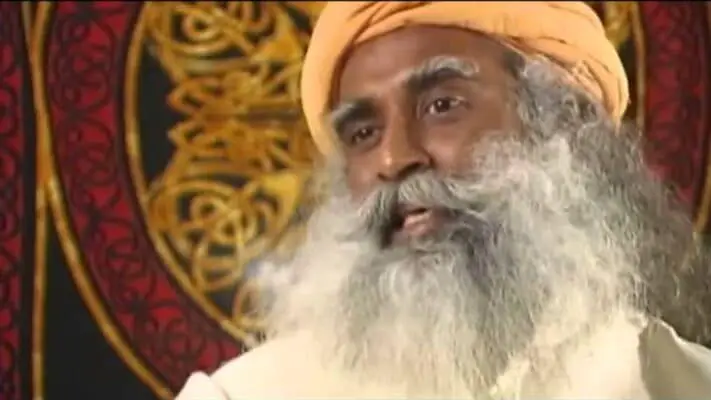Positive emotions can literally pay dividends.
“Dividends” are a form of recurring, passive income from larger investments in a business or company. Positive emotions emit intangible dividends that can add up, over time, into incredible sums of personal resourcefulness. And as Scott Belsky said so poignantly: “Resources are like cards. Resourcefulness is like muscle.”
I don’t know about you, but I would rather hedge my bets on resourcefulness over resources any day of the week. But the best case scenario is to build your resourcefulness while also growing your personal resources.
… so how do we do that? The answer might be easier than you’d expect.
The Science Behind It
Barbara Fredrickson is a social psychologist and a Professor of Psychology at UNC Chapel Hill, but she is more widely known for her work on positivity and, more recently, for her work on the topic of love.
Fredrickson highlights the fact that positivity has perennially been one of the most understudied fields in psychology, which makes sense. Most of the empirical studies are focused on the origin and impact of negative emotions simply due to the fact that the majority of the issues we face in society stem from some form of negative emotion.
Yet, a key finding in Fredrickson’s studies is that…
Positive emotions don’t just stem from optimal living, but they can actually PRODUCE the very optimal functioning we all desire.
This means: positive emotions aren’t just the product of good lives, they are actually one of the key stimulants or precursors to the “good life.”
If you have never read a scientific paper before, Fredrickson’s “Broaden and Build Theory” is a good place to start (since it deals with more relatable/tangible experiences than most scientific papers).
The Broaden and Build Theory makes the case that positive emotions not only “ broaden an individual’s momentary thought–action repertoire” (basically the tools/mindset/perspective you use to handle situations or circumstances in life), but they also “ build that individual’s personal resources” (your ability / preparedness to handle whatever future scenarios life may throw your way).
It broadens the resources you are able to utilize, while better fitting the needs of the moment; and it also builds your resourcefulness for whatever challenges the future holds.
Broadening
For those who aren’t going to read the paper (most of us), let me expound a little more on what Fredrickson explains in the study.
In the various trials she conducted, Fredrickson compares and contrasts the emotions of joy and contentment (on the positive side) with the emotions of fear and anger (on the negative side). The positive emotions produced a “broader attentional scope and thought-action repertoire” (arsenal of responses to situations) than a neutral or negative state, while the negative emotions produced a much narrower version of both attentional scope and thought-action repertoire.
One of the ways this can play out is by undoing the affect of negative emotions or experiences in our lives (referred to as the “undo hypothesis”). The studies Fredrickson looked at and performed helped show that positive emotions have a positive influence and can undo the affects of negative emotions on the cardiovascular level. (Aka — it impacts our physical well-being!)
If we zoom out to a bigger-picture perspective, “broadening our thought-action repertoire” can be compared to accumulating more resources.
In viewing money as a resource, we would all consent with the widely accepted truth that “money can’t buy happiness”, but when faced with a challenge, obstacle, or setback in life, having more resources to throw at the situation is always desirable. It’s not the key to a good life, but it is a benefit and support to overcoming and persevering through the inevitable challenges faced in life.
It’s also comparable to exercise. The more types of exercises we know, the better we can build our muscles by programming a wide array of movements and lifts to grow a wider range of fitness in our lives.
Point being: the more resources we have, the better we can handle a broad spectrum of situations or circumstances throughout our lives.
But resources are only half of the battle, the more important battle lies within.
Building
Resourcefulness is like learning, and learning is like money. The more you make, the more opportunities you have to make more, and the greater your ability to multiply your wealth at a faster rate.
The more you learn, the more you are able to learn and the faster you get at learning it. The more resourceful you are, the more your resourcefulness will be applied to greater and greater challenges. It builds over time.
Fredrickson points out that psychological resiliency is boosted and supported by positive emotions. “Resilience”, as looked at it in the study, is not necessarily a person’s ability to cope with situations in the moment, but rather their ability to “bounce back” after a physiological stressor. From the test that Fredrickson performed as well as the studies done by a handful of others in the last 30 years, there is resounding evidence that positive emotions may fuel a person’s psychological resiliency.
Beyond fuel for resiliency, positive emotions are what build personal resources, meaning: positive emotions not only help you be more resilient, but they also build your overall resiliency over time. It doesn’t just give you the tools and building materials for construction (making you a better and more equipped builder), but they actually build the building for you so that over time you become a fortress of resiliency.
When you put all these pieces together, positive emotions result in being the fuel for psychological and physical well-being. But there’s more!
The other component Fredrickson highlights is a parallel picture seen in negative emotions or depression. It is well documented that depressed moods result in a downward spiral fueled by negative emotions and narrowed, pessimistic thinking. Over time, these factors compound into greater and greater degrees of depression. Similarly, Fredrickson’s broaden and build theory “suggests a complementary upward spiral in which positive emotions and the broadened thinking they engender also influence one another reciprocally, leading to appreciable increases in emotional well-being over time.
Simply put – in building your resourcefulness over time, through consistently applying and maintaining a positive mindset, you literally set in motion an upward spiral that amplifies and compounds open-mindedness, curiosity, positivity, and overall well-being.
Even simpler…
Positive emotions fuel human flourishing.
Contagious In The Best Way
As with negativity, positivity can spread like wildfire. It’s contagious in the best way.
When you spend time around people who like eating healthy, over time you begin to develop some of those same habits or values. When you surround yourself with ambitious and aspiring individuals, you end up becoming more inspired and driven than you were before. When you see others who are doing random acts of kindness or showing love towards others, you are prompted to display more of that love towards those in your own life.
Just like negativity, positive emotions are generative. They are not just generative in producing more positivity within yourself, as we’ve already learned, but they are also generative in producing more of those same actions and mindsets within those around you.
Positivity is the type of wildfire that you want to stoke and spread as far and as wide as possible. Why? Because it is the seed for human flourishing, planting crops that will promote the greater good of our society and the generations to come.
Ways To Practice Positivity
So how do we get there? What does it look like? How can I possibly be an optimist when my whole life I’ve been a pessimist?
The first step is always to believe it is possible — to believe that you are capable of changing your mindset — to believe that it’s worth the fight to change your default ways of thinking and implant a new worldview to operate under — to believe that you can make a difference in the world by first making a difference in what you put out to the world and what you give to yourself and to those around you.
Belief is what fuels action, and action is what changes thinking.
It’s easier to act your way into a new way of thinking, than to think your way into a new way of acting. – Millard Fuller
Step One: Believe positivity is worth it and you have the ability to produce it.
Step Two: Act that belief in to existence.
It can be as simple or complex as you want it to be, but the reality stays the same. You have to do the work to instill optimism into your bones in a way that spirals up, becoming your natural, default response no matter the circumstance or situation. There are countless different strategies or ways to accomplish this so I’ll leave that for you to look into on your own but there’s one more helpful understanding to highlight.
Final Reflection
Every situation, circumstance, conversation, event, or result has two perspectives of that reality:
- Perspective #1: the glass is half-empty
- Perspective #2: the glass is half-full
We’ve all heard this before, it is not a new concept. Yet, it is a powerful concept and it’s worth reminding you of here. Every situation can be viewed from 1) a positive lens, or 2) a negative lens. The situation itself does not change, but our response to the situation drastically differs. And guess what? Which lens you look through is 100% up to you. You have complete control over that decision.
… it’s time we take full ownership of that decision and start planting the seeds that fuel human flourishing.
What do you say?
* Reference: “The broaden and build theory of positive emotions”, Barbara Fredrickson; Department of Psychology, University of Michigan, 525 East University Avenue, Ann Arbor, MI 48109-1109, USA)
















